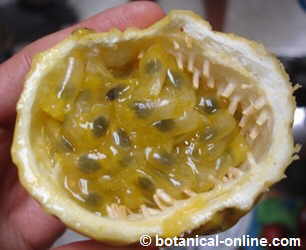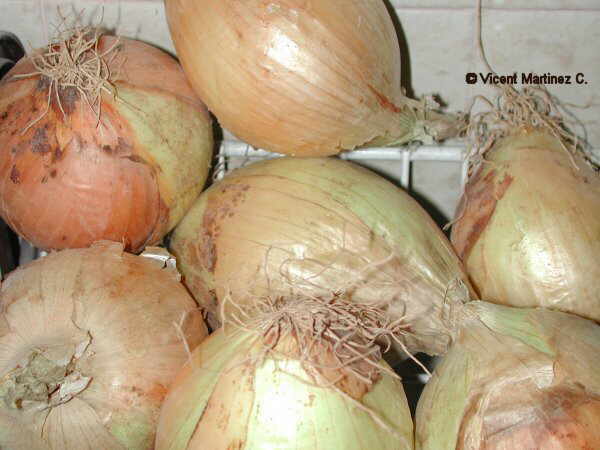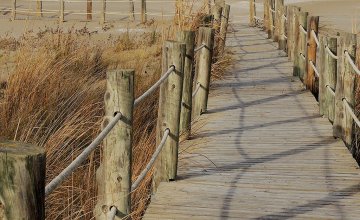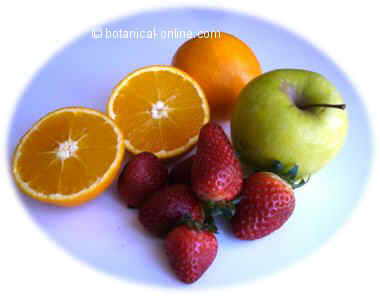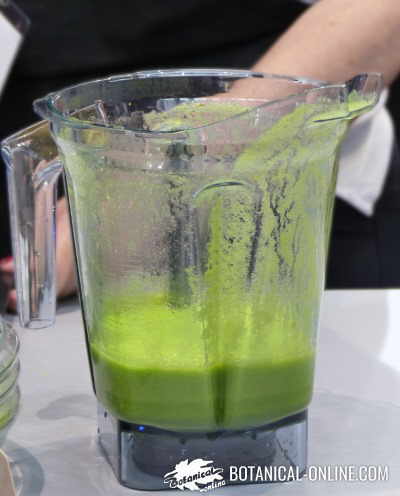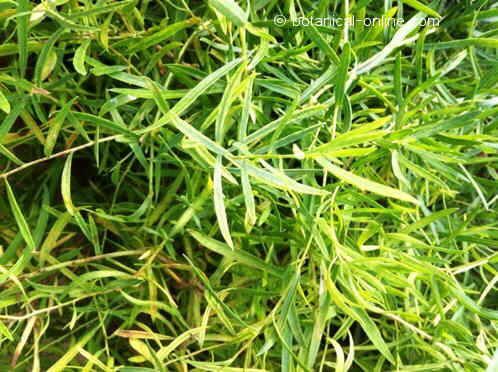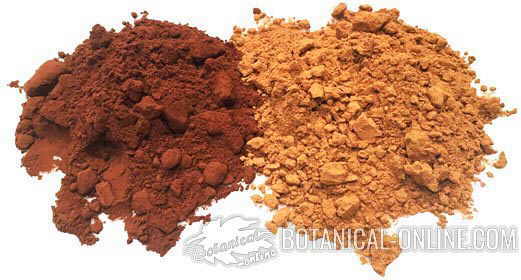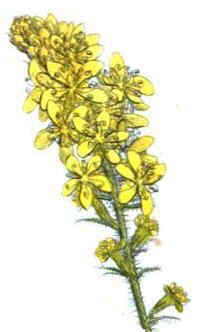Contents
- 1 How to grow passionfruit
- 1.1 How to cultivate maracujá or passion fruit
- 1.2 Characteristics of passion vines
- 1.3 Varieties of passion fruits
- 1.4 Passion fruit watering
- 1.5 Passion fruit: Environment and placement
- 1.6 Passion fruit: Plantation and reproduction.
- 1.7 How to stake a passion fruit?
- 1.8 Passion fruit: Care, pruning, soil and fertilizer
- 1.9 How to prune a passion fruit?
- 1.10 Passion fruit: Soil and fertilizer
- 1.11 Passion fruit: Pests and diseases
- 1.12 Maracuya diseases caused by bacteria
- 1.13 Diseases caused by viruses
- 1.14 Passion fruit: Species and varieties
How to grow passionfruit
How to cultivate maracujá or passion fruit
Characteristics of passion vines
|
Passion flowers or passion vines (Passiflora ssp) comprise a series of climbing lianas that grow in the wild in the subtropical regions of America.
There are more than 460 species of the genus Passiflora.
Among them, stands out passion fruit (Passiflora edulis) , which, as the name suggests, it is mainly used for its edible fruits and it is generally recognized as the authentic Maracujá.
Originating in the Amazon region of Brazil, it is cultivated in many parts of the world that have a tropical or subtropical climate.
Varieties of passion fruits
From Passiflora edulis derive a series of varieties. The most recognized are:
– Yellow passion fruit: (Passiflora edulis f. Flavicarpa): It needs to be cultivated in tropical areas with constant and elevated temperatures. It is more resistant to disease and produces much more than other varieties. It is cultivated mainly in South America, Hawaii and Australia
– Purple passion fruit (Passiflora edulis f. Edulis). It grows well in temperate zones. It is usually cultivated in other parts of Africa and India
 Passion fruit watering
Passion fruit watering
|
It is important to water this plant when climate is dry. This will be taken into account particularly during the growing season. It should not be forgotten that, being a tropical plant, it requires abundant and constant irrigation.
Passion fruit needs 800 and 1500 liters of water per year, therefore, in case of not occurring these rains or not to do it in a well distributed way throughout the year, it must be watered artificially. Irrigation will therefore be mandatory in warm non-tropical areas, or in cooler areas when grown in greenhouses.
Environmental humidity should also be taken into account. Passionfruit requires high humidity to produce abundant and good quality fruits. In case you can control the humidity of the environment, this detail must be taken into account.
Irrigation will be done using the gravity technique, so that the entire surface around each plant in a diameter of about 80 cm to 1 meter is well soaked. It has been proven that sprinkler irrigation is not adequate as it favors the onset of fungal diseases and problems of flowering.
 Passion fruit: Environment and placement
Passion fruit: Environment and placement
Passionfruit needs to be grown in a warm place with temperatures ranging from 24 to 28 ° C. Temperatures above this range produce a faster ripening of fruits, at the cost of a loss of quantity, visibility and quality. On the other hand, when temperatures are lower, the harvest is delayed and production is much lower.
In warm zones it is cultivated from sea level to 1,300 meters, generally in areas of influence of the Pacific Ocean, being the most appropriate level for an optimal production between 400 and 800 meters. If you plant in low areas of Atlantic influence, you may have problems.
Passion fruit is a plant that must be grown in the sun. Only when the sun hits an average of 5 hours a day on its leaves, it will produce quality fruits with proper nutritional properties. It is best to plant passion fruit in sunny and sheltered areas if optimal results are to be achieved. Very windy places favor the drying of the leaves and forces to a too abundant irrigation, besides producing damages in the surface of the fruits.
In non-tropical areas the cultivation of this plant is more delicate, since it requires very suitable environment and exposure factors. All this obliges many times to plant these creepers under cover. However, if we have a sunny and protected place, they will be able to grow outdoors producing flowers and fruits of greater presence and quality.
Passion fruit: Plantation and reproduction.
Passionfruit can be reproduced by means of layering or by cutting, although the most suitable form is by means of seeds.
How to reproduce passion fruit through seeds?
It is desirable to obtain certified seeds that guarantee adequate production and good quality fruits, with the presence and the appropriate size. Once the seeds have been purchased, they must be properly prepared before planting them in the nursery.
For this, they are covered with water for about four days, which makes them soften so they can germinate. Subsequently they are washed well to remove the mucilaginous layer that has produced the fermentation in water. Finally they are treated with fungicide.
Once properly prepared, they are planted in the nursery, on a previously disinfected soil. They will be planted on distant furrows about 15 cm and about 40 cm from each other. The seeds should be covered with a thin layer of earth. They will be watered properly and placed in a shady place keeping the humidity level in a constant way.
After about 20 days the seeds begin to germinate. After about 20 days after germination, when the seedlings have reached about 10 cm in height, each plant should be transplanted in a plastic bag for seedlings with a teaspoon of organic fertilizer. You should also support the copy on a tutor so that it can easily graspe.
Once the plant has reached half a meter in height can be transplanted to its final place. To do this, this should be prepared properly: The soil should be plowed well to be previously free of grasses, branches or other plants. Subsequently, holes of about 50 cm depth and 40 cm width will be made.
Each of the holes should be located at a distance of about 5 meters on furrows separated by about 3 meters from one another. (In the case of very poor soils, the plants can be separated by about 4 meters, keeping the same distance between the furrows) A good amount of organic fertilizer must be supplied inside the hole.
The bare root plants will be placed inside a hole, the proper tutor will be placed and the earth will be reasserted around it. Then they will be tied to the tutor. (See more details on how to plant a climbing plant)
How to stake a passion fruit?
When a support is applied to passion fruis, There are three different ways to do it: trellis, vine training and Hawaiian or T-shaped staking. The trellis system, although it achieves a greater use of light and facilitates the collection of fruits, is very expensive, so it is rarely used.
The system of vertical trellis or just trellis consists of placing in the terrain a series of posts about 5 meters away from each other that reach a height of about 2 meters. On these posts two lines of wires are laid; one to 1 meter in height and another to 2 meters in height above the ground.
The T-shaped staking is formed by a series of structures formed by a vertical pole of about 2 meters of height on which another horizontal of a meter of length is placed. These are usually located about 6 meters away from each other. On the horizontal structure, three wires located about 30 cm from each other are suspended.
Trellis is the most used because it provides a number of advantages over the other staking methods:
– Greater ventilation and exposure to light and, as a consequence, greater growth and lower risk of diseases. Greater possibility of use in areas of high humidity.
– Greater pruning and, as a result, less possibility of cross-linking of the branches.
– Easier in collecting fruits both mechanically and manually.
– Greater ease in the application of treatments.
Despite the advantages, it must be taken into account that this is a very expensive method and requires good maintenance.
 Passion fruit: Care, pruning, soil and fertilizer
Passion fruit: Care, pruning, soil and fertilizer
In addition to staking, care must be taken to keep the soil moist at appropriate times. It is also necessary to keep the ground free of weeds. For this, soil will be weeded between plant and plant from time to time, so as not to injure the roots that grow superficially.
Other care that must be taken into account are:
How to prune a passion fruit?
Pruning of passion fruit focuses on the use of this technique to promote adequate growth (formation pruning), to eliminate those branches that are too low, those that stand out too much from the tutors or those in poor condition (maintenance pruning) And to get the plant, once established, to have more vitality (renewal pruning).
Pruning will eliminate all branches less than 1 meter high above the ground. Subsequently, it will leave only a couple of main branches on each plant. When these reach the upper strands of the trellis, the terminal bud will be cut so that shoots that can move laterally arise. Finally, if the plant has too much density, one of the two main branches can be eliminated.
In the pruning of renovation, which is carried out in the third year after planting, all branches except the main branches will be removed, leaving them with a length of 1.5 meters.
 Passion fruit: Soil and fertilizer
Passion fruit: Soil and fertilizer
The best soils for the cultivation of passion fruit are the deep and well drained ones with abundant organic matter. This plant needs soils at least 1 meter deep to develop normally. It prefers well-dug soils with abundant manure, with a Ph that can vary between 5, 5 and 7, with 6 being the ideal pH.
Clay soils must be avoided at all costs because they prevent drainage by retaining the water in the roots, which is the cause of the appearance of rot and numerous fungal diseases.
Passion fruit must be properly fertilized to achieve optimum production Among the most needed nutrients are nitrogen, phosphorus and potassium. In the preparation of soils, it is appropriate to add well crumbled organic matter to grow properly. Subsequently, before flowering, it should be fertilized again, also adding potassium. A multi-fertilizer every two months can be interesting.
Besides cultivating directly in the soil, passion fruit can also be grown in large containers, always taking into account that these must be deep and with a diameter of not less than 35 cm. Provide a fertile soil rich in organic matter.
 Passion fruit: Pests and diseases
Passion fruit: Pests and diseases
The main pests of maracuja are:
– Red spiders: They are mites belonging to the genus Tetranychus. They feed on the leaves which suck with their specialized mouths. All this produces the yellowing of the leaves and their subsequent fall. They should be treated with acaricides.
– Diptera and Hymenoptera: Mainly flies. As Silba pendula whose larvae feed on fruits. Proper treatment involves the elimination of infected material or biological combat with a predator, the use of the wasp Biosteres longicaudatus.
– Passionfruit flower-bud fly (Dasiops sp) attacks the floral buds preventing them from developing. The fruit fly (Anastrepha sp) attacks the fruits making them useless for consumption or for sale.
Within the hymenoptera, it is necessary to emphasize the stingless bee (Trigona spp.), A bee that is generally very beneficial as a pollinator but, abounding too much, it attacks the young leaves and the flowers causing great damages and favoring the establishment of fungi.
– Other insects: Other insects that can attack the passion fruit are: the leaf-footed bag (Leptoglossus sp): it attacks the floral peduncle so it does not let the fruit increase in size. Western flower thrips (Frankliniella occidentalis, Trips tabaci lindeman) feed on the buds, preventing the growth of plants.
The treatment of these pests with insecticides is very problematic because on this species of insects depends pollination to achieve abundant fruiting. In case chemical treatments are specified, it should be taken into account which products may affect the beneficial species less, and at what time of the day they should be applied to cause the least possible damage.
The main diseases of passion fruit are:
Diseases caused by fungi
– Root decay of the root necks: This is produced by the fungus Fusarium wilt of passion fruit (Fusarium oxysporum passiflorae) that attacks the roots causing their rotting and determines that the leaves turn yellow and the plant withers. The disease causes a weakening of the roots that show a characteristic reddish color.
Among the best measures of prevention is to provide the crops with adequate drainage since the accumulation of water in the roots is the main cause of this problem. In the same way, the soil should be kept free of weeds to avoid that the fungi can be installed in the same. Also fumigations with copper sulphate or the addition of lime into the hole at the time of planting can prevent it.
– Black scap (Cladosporium herbarum) This is another pathogenic fungus that causes warty lesions on the fruits. The treatment involves the fumigation with copper sulfate and lime at the time of fruit formation.
– Anthracnose: It is a fungal disease caused by the fungus Colletotrichum gloeosporioides that affects both fruits, leaves or branches. In the fruits produces sinks that reach the inner part of the fruit causing the fall. It can also attack the edge of the leaves causing light spots of about 5 mm in diameter with a darker border or branches on which chancre.
Among the main methods of prevention are pruning to achieve greater aeration and all appropriate measures to facilitate greater drainage. Treatment involves the use of chemical measures with appropriate fungicides.
Maracuya diseases caused by bacteria
– Oily spot: This is caused by the bacterium Xanthomonas campestris pv. Passiflorae. It produces oily stains on olive leaves. The bacteria can also cause wilting by internal plant obstruction. The leaves fall, the buds dry and the plant is damaged.
The main prevention methods are the use of healthy seeds and cleaning tools, especially those used for pruning. The treatment involves the use of copper oxychloride.
Diseases caused by viruses
Among them are:
– Fruit hardening virus: (PWF = Passion fruti Woodines Virus). It is a virus transmitted mechanically or through aphids (Myzus persicae, Aphis gossypi). It produces deformation in the fruits. These are shown smaller and harder, with less pulp and more shell.
– Cucumber mosaic virus: CMV affects even more plants than the previous virus (about 190 plants). It is so named because it was discovered for the first time in 1934 on cucumbers, although it can affect other plants so well known as melons, pumpkins, tomatoes, carrots, spinach, beans, celery, etc. Numerous flowers are also affected by this virus.
The most characteristic symptoms are leaf mottling, circular spots, dwarfism and distortions of fruits and flowers. The most characteristic is the elongation and narrowing of the leaves that, instead of presenting true leaflets, are rather reminiscent of tendrils. The fruits appear stunted and have no commercial value.
The transmission vector consists of aphids and some herbs such as cuscuta. There are over 80 species of aphids that can transmit this disease, including green peach aphid (Myzus persicae)..
There are no varieties resistant to this type of mosaic so it is necessary to adopt adequate prevention to prevent infection.
Other viruses that affect passion fruit are yellow mosaic virus or passion fruit rickets virus.
 Passion fruit: Species and varieties
Passion fruit: Species and varieties
Other species of Passion fruits, also cultivated, although with a lower nutritional value or less interesting production are:
– Purple passionflower, wild passion vine, maypop (Passiflora incarnata): with yellow fruits that turn orange when maturing. Being less sweet, it is used to make jams, sweets or drinks in which sugar is added. The dry plant is used as a folk remedy for the treatment of insomnia and for the treatment of nervous problems of the stomach.
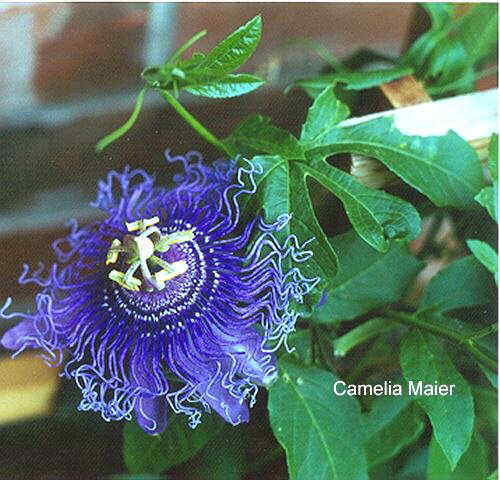
Photo of Passiflora incarnata flower
– Giant tumble, grenadine,, giant tumbo, barbadine or badea (Passiflora quadrangularis): it is one of the most vigorous maracuyas, being able to reach 20 meters height.
It is characterized by producing the largest fruits, with specimens up to 15 cm in length and 30 in diameter. Like the previous species, it is little sweet, so it is used to make jams or sweets.
The green fruits can be eaten as vegetables. It is very rich in vitamin A, vitamin C and minerals such as iron, phosphorus and calcium, but it stands out because it is recognized as the plant with a higher content of vitamin B3 (niacin).
The root is poisonous and is used to eliminate intestinal worms. In its composition, serotonin, a potent neurotransmitter, has been found necessary for the good state of the nervous system and whose deficiencies are responsible for pathologies such as depression, certain types of obesity, obsessive behavior, insomnia, migraines, etc.
– Water lemon, golden bellapple, lilikoi, Jamaican honeysuckle (Passiflora laurifolia)Native of Colombia and Peru, with yellow fruit of up to 8 cm and flowers with reddish petals on one side and greenish on the other.
Like the Passiflora quadrangularis, its roots serve to make decoctions with which the intestinal worms are eliminated.
It is one of the least known. It produces fruits of about 8 cm in length orange-yellowish color, which contain a pinkish-white, very juicy and slightly acidic pulp very rich in vitamin B5 (pantothenic acid).
Many times it is used to quench the thirst of the Caribbean. Todo do this, a small hole is made in one of the ends and, through it, its liquid is absorbed.
– Winged-stem passion flower, fragrant grenadilla (Passiflora alata) It is characterized for producing very showy flowers of red color and star shape. Fruits very large and very scarce, reason why they are very appreciated.
– Red banana passionfruit (Passiflora antioquiensis): It is characterized by being one of the plants of this genus that produces the longest flowers and the most delicious fruits.
It grows in a natural state in the forests of Colombia where they are pollinated by hummingbirds. Its flowers and fruit hang from long peduncles.
It is a very rare and difficult to find plant, which very rarely can be found cultivated.
– Common passion flower, blue passion flower, bluecrown passionflower, wild apricot, Jesus flower, flower of five wounds (Pasionaria caerulea) A native of Central America, it appears as a plant grown in numerous gardens with a warm climate because of its ability to withstand temperatures lower than most plants of this genus.
The flower of the passion is the plant of this genus that is most used in Phytotherapy.
– Banana poke (Pasionaria mollissima): It produces fruits very early and abundant. Its content in sugar is lower than in the rest of passion flowers.
![]() More information on passion fruit and passion flower.
More information on passion fruit and passion flower.

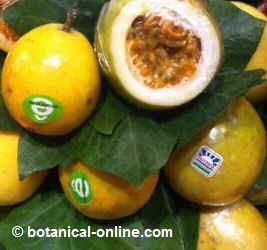
 Passion fruit watering
Passion fruit watering